How KQED Used Hearken to Gather 1,300+ Questions About Homelessness in the Bay Area
November 2016
12 min.
Want to know more?
Feel free to reach out:
info@wearehearken.com
Stories from this Case Study:
When KQED asked for listeners’ questions about homelessness, the response was overwhelming. Here’s how they handled it.
This summer, Bay Area radio station KQED had an enormous response to a question they asked their audience: What do you want to know about homelessness in the Bay Area? KQED put the prompt out to their audience in preparation for a week of coordinated coverage of homelessness with several other San Francisco news outlets.
KQED has asked for audience questions before. In fact, their popular series Bay Curious runs entirely off of audience questions (using the Hearken method and tech). Usually when KQED’s Bay Curious solicits audience questions, they get a half-dozen questions per week on average. But within two weeks of putting the call out for questions about homelessness, KQED listeners sent in more than a thousand questions.
Hearken spoke with KQED reporter Jessica Placzek and producer Olivia Allen-Price to hear how they solicited questions around homelessness and handled the huge response, to learn tips to share with other newsrooms who may also face the excitement and challenges of an overwhelming audience response.
Part 1: Inviting people to send in questions on homelessness
KQED used several different platforms to invite questions.
On-air, they did 30-second callouts throughout the day on the radio that directed people to the website.
They did several different social media promos, including on Facebook and Twitter:
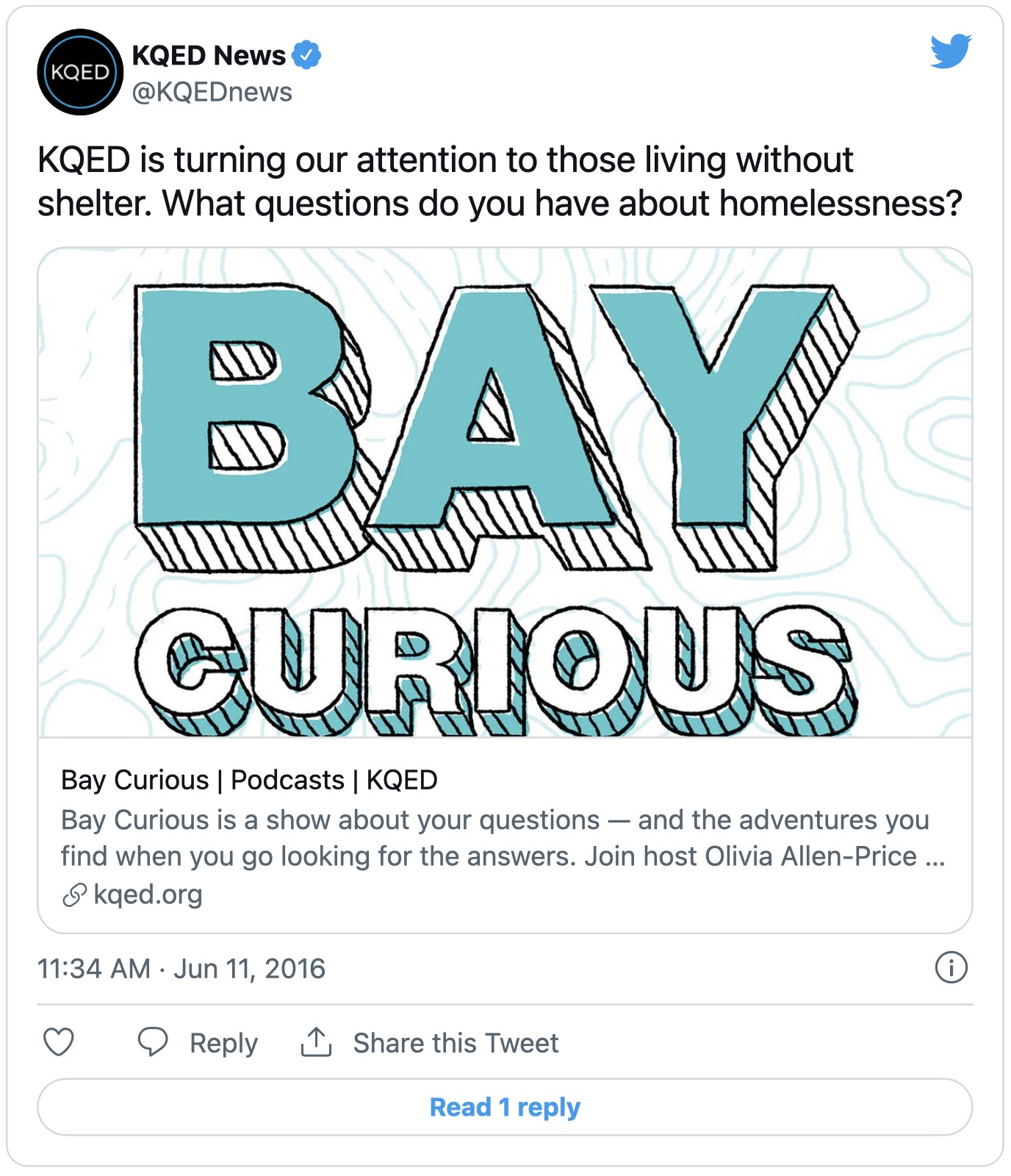
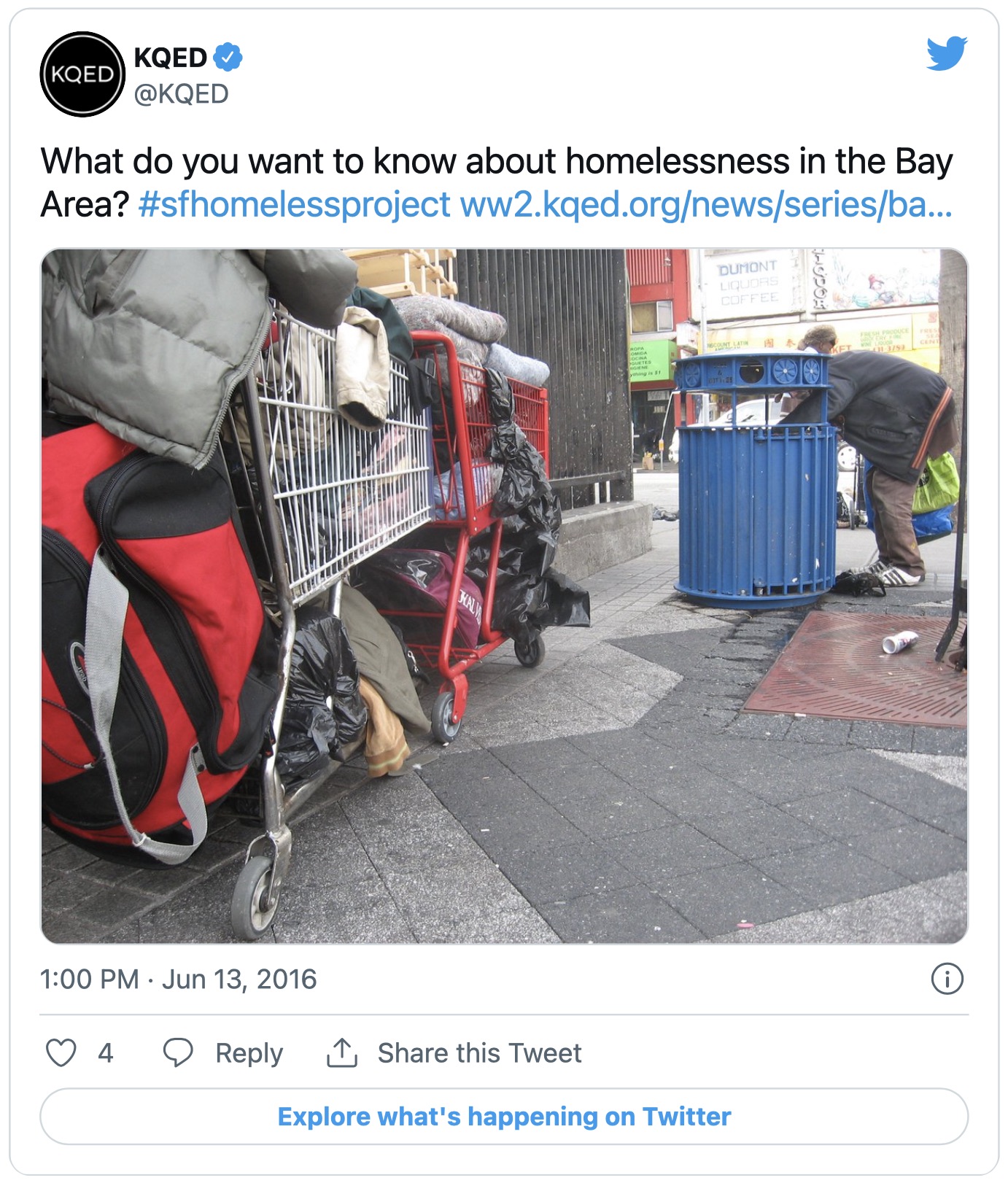
And, most successfully, they sent an email to more than 400,000 KQED members.
Olivia says part of the success of the email could have come from how simple it was, focusing only on a single subject and keeping it short.
Jessica suggests that the Bay Curious audience was already primed for this sort of interaction with KQED, since they’d heard previous stories that were born out of audience questions. And, of course, the topic of homelessness strikes a nerve for many in the Bay Area.
Bay Curious also partnered with another KQED show, “Forum,” for this project.
“We were expecting like… 30 questions. That’s not what happened at all.”
Jessica Placzek, KQED Reporter
Part 2: Watching the questions roll in
In the first week, 47 questions came in. Then, on June 18, 396 people sent in questions. “I didn’t believe it,” Jessica says. “I kept refreshing and there were more questions.” June 19: another 389 questions. June 20: 352 more questions.
By this point, Jessica was a bit overwhelmed.
She was trying to group the questions into categories mentally (and then using Hearken’s organizational tools), but there were just too many questions to keep up with. She went to her editor, and they decided to focus on the first 400 questions that came in.
Many of the questions they received were very similar — Jessica says more than 100 questions were about what causes homelessness. She was also surprised at how offensive many of the questions were, and the assumptions made about homeless people. She decided that the best way to tackle this mountain of curiosity was to focus on myth-busting, including examining the assumptions she recognized she, too, had made.
Part 3: Reporting out answers
For the first piece based on the questions that came in, Jessica aimed to answer several of the most common questions. Because KQED was participating in the week of coordinated coverage of homelessness with other organizations, she also checked what other outlets were planning to make sure she wouldn’t be duplicating stories already in the works.
These are the questions she focused on:
- What are the most common causes of homelessness?
- What do I do if I think someone needs help?
- Are other cities sending their homeless to San Francisco with one-way bus tickets?
- Do any of the homeless choose life on the street?
- What happens to all the money that San Francisco spends on the homeless?
- Why are there so many homeless people in San Francisco, and why are they so visible?
- Why are there so many more young homeless people in San Francisco than other places?
- Are there any plans for adopting a “Housing First” program similar to that in Salt Lake City?
- How can building tiny houses help homeless people in the Bay Area?
Forum, another KQED show, reported out answers by bringing together a panel of experts on-air to talk through several of the same questions: Searching for the Hows, Whats and Whys of Homelessness.
Part 4: Getting the answers out into the world (and back to the question-askers)
Here’s the first story Jessica wrote based on the questions that came in: Homelessness: You’ve Got Questions, We’ve Got Answers.
This story quickly but thoroughly addresses each question, with lots of links to resources and past coverage. The story was just one of dozens KQED and partners published during the week of coordinated coverage in late June. Jessica says in hindsight, she might have preferred tackling one question more in-depth rather than a group of questions at surface-level.
Bay Curious, KQED’s regular Hearken-powered series, traditionally follows up with each question-asker with a thank-you email, and then an additional email or more if the question-asker’s question is chosen for a voting round or answered. But for this huge number of people, Jessica considered sending the thank-yous in a big group email instead of individually.
Using Hearken, it’s possible (and a good idea!) to export the email addresses of people who care about a certain topic — maybe they voted for a question, or asked questions on similar topics — and follow up with those people as you’re reporting or publishing an answer. In the case of the homelessness questions, Jessica and her colleagues are planning to follow up with the question-askers in advance of a second day of focused coverage of homelessness, coming in early December.
Lessons to share
What would Jessica and Olivia recommend to other newsrooms who suddenly find themselves getting many more questions than they expected?
- Start figuring out how you want to organize things quickly. If you’re using Hearken’s tools, put questions into categories or lists early, and try to keep the pile under control in real time.
- Pull in additional help as soon as you can. It was challenging for Jessica to both manage the tide of questions while also beginning to report out answers and also doing other work. Olivia says knowing what she knows now, she would’ve put at least three staff members on the project, and would’ve try to delegate questions on certain topics to other areas of the newsroom (like questions about health issues to the health reporter).
- Set realistic expectations for yourself — you may not be able to respond to every question individually, or maybe not in the timeframe that you’re used to. In the same vein: Set realistic expectations for your audience.
- Consider the best approach for reporting answers within your time constraints: Is the goal to answer as many questions as possible, or to answer one or two as deeply as possible? Or maybe a series?
All in all, KQED’s experience with the homelessness prompt allowed them to understand the kinds of questions that were top-of-mind for their community, and see the scope of curiosity around the topic, which they had previously underestimated.
More case studies
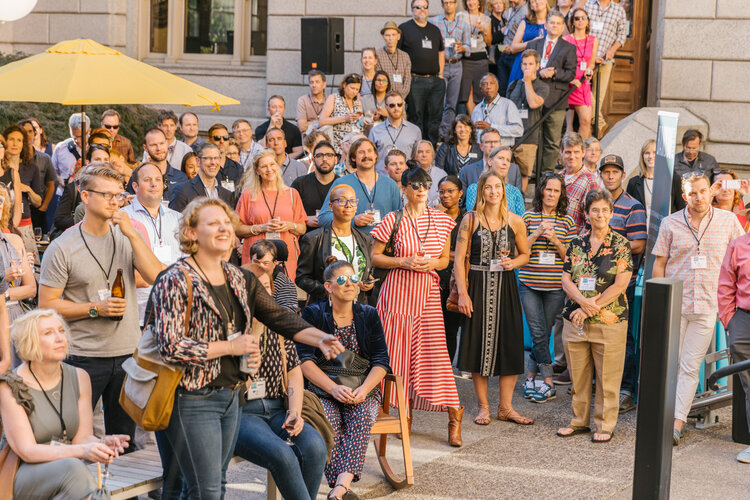
CASE STUDY – Business For a Better Portland (BBPDX)
How Business for a Better Portland grew to 400 members in three years
BBPDX saw an opportunity to design a 21st-century chamber of commerce that would leverage a broad spectrum of novel, high-impact engagement practices.
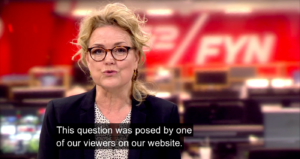
CASE STUDY – TV2 – Denmark
How Danish broadcaster TV 2/Fyn captured majority viewers during COVID-19 through engaging audiences
TV2/Fyn in Denmark had been working for years to become the go-to relevant source for news. When they launched Hearken’s EMS, they achieved that goal.
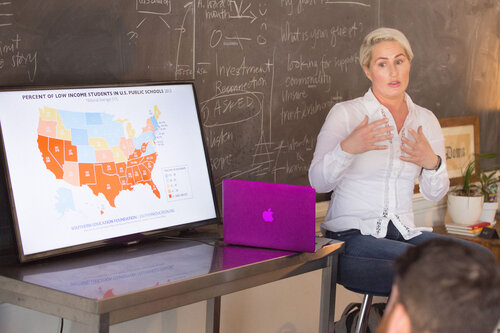
CASE STUDY – The Colorado Media Project
How Hearken helped the University Innovation Alliance design new offerings
Hearken worked with the UIA to research, scope, and design new services offerings to bring in additional revenue and expand their impact.
